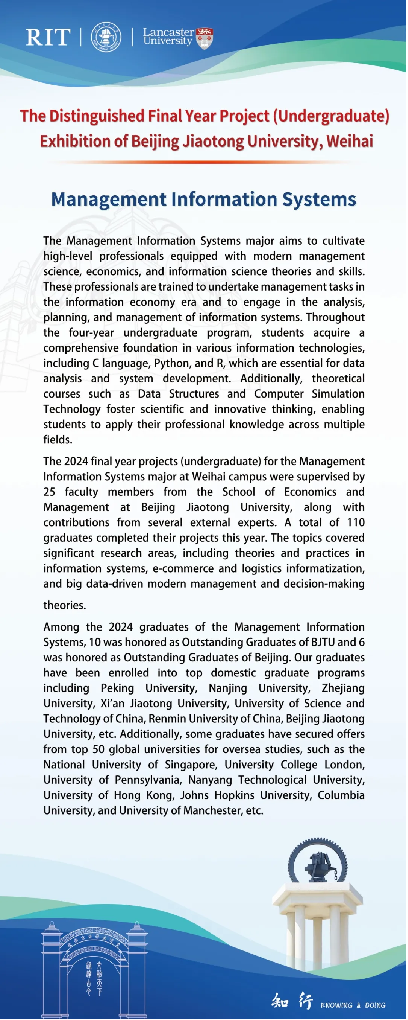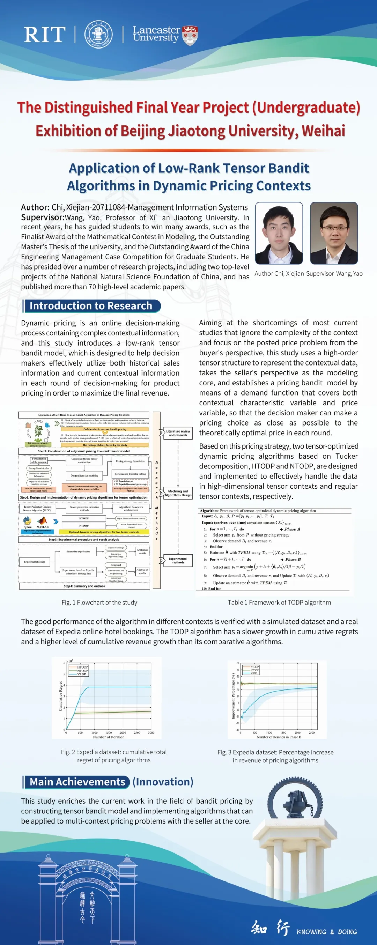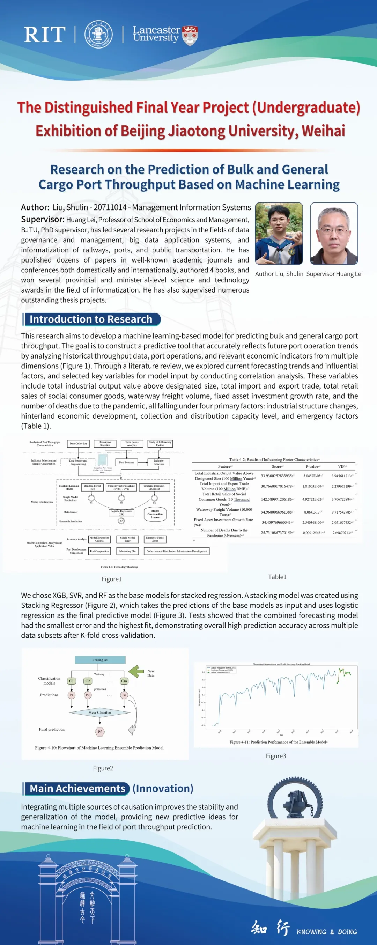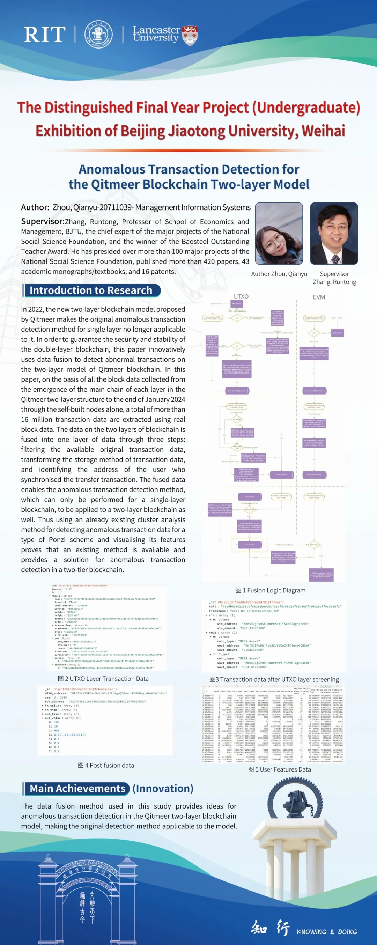
XU Lingrui
In this study, by constructing the GraphGPT prediction model TacticExpert, the spatio-temporal modeling of basketball tactics is combined with a large language model for the first time, which provides ideas for building a vertical large model in the field of basketball with unified pre-training tasks, multiple datasets and multiple downstream tasks, and realizing accurate prediction in zero-sample scenarios.

Chi Xiejian
In this study, we introduce a low-rank tensor slot machine model to construct a tensor slot machine applicable to multi-context pricing problems with the seller as the core, and design and implement two dynamic pricing algorithms based on the Tucker decomposition of tensor optimization, HTODP and NTODP, which are aimed at helping decision makers to efficiently utilize both the historical sales information and the current contextual information in pricing the products in each decision round to maximize the final revenue. maximization.

Liu Shulin
This study is dedicated to developing a machine learning-based throughput prediction model for bulk cargo ports, using StackingRegressor to create a stacked model, integrating multiple sources of causality to improve the stability and generalization of the model, and providing a new prediction idea for machine learning in the field of port throughput prediction research.

Lin Xinze
This paper focuses on the emergency evacuation of stranded passengers in subway stations, and establishes a simulation evacuation model based on the shortest path of the ant colony algorithm by approaching the problem from the perspective of management science. Using the ant colony algorithm to explore the optimal path of evacuation, the daily operation and emergency evacuation model of the subway station is established to simulate the real evacuation situation of the subway station, which helps to formulate the evacuation strategy.

Zhou Qianyu
In this study, we innovatively use data fusion to detect anomalous transactions on the Qitmeer blockchain two-layer model, detecting and visualizing the features of anomalous transaction data for Ponzi schemes and proving that the existing methods are usable, so that the anomalous transaction detection method, which can only be carried out for the single-layer blockchain, can also be applied to the two-layer blockchain.


